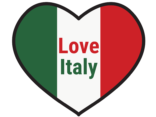In Italy, the quality of tap water is generally high and safe to drink. However, the taste and mineral content can vary depending on the region. While locals often drink it without concern, tourists may prefer bottled water due to unfamiliarity with the taste or potential sensitivity to the mineral content.
Understanding the Safety of Drinking Tap Water in Italy

When traveling to Italy, one of the most common questions tourists often ask is, “Can I drink the tap water?” The answer is a resounding yes. Italy’s tap water is generally safe to drink across the country. However, understanding the safety of drinking tap water in Italy requires a deeper dive into the country’s water supply system, quality control measures, and regional differences.
Italy’s water supply system is highly developed and well-regulated. The country’s water infrastructure is managed by both public and private entities, ensuring a consistent supply of clean, potable water to households, businesses, and public facilities. The water is sourced from natural springs, rivers, and underground aquifers, and is treated and tested regularly to ensure it meets the stringent safety standards set by the European Union and the World Health Organization.
Quality control measures are in place to ensure the safety of Italy’s tap water. The water undergoes rigorous testing at various stages of the supply chain, from the source to the tap. These tests check for a range of potential contaminants, including bacteria, viruses, heavy metals, and chemical pollutants. The results are closely monitored and any issues are addressed promptly to ensure the water remains safe to drink.
Despite the high standards of water quality across the country, there are regional differences in the taste and hardness of the tap water. This is due to the varying mineral compositions in the different water sources. For instance, the tap water in Rome, sourced from ancient aqueducts, is soft and has a mild taste. On the other hand, the tap water in Milan, sourced from Alpine springs, is harder and has a slightly mineral taste. These differences in taste and hardness do not affect the safety of the water, but they may influence personal preferences.
While Italy’s tap water is generally safe to drink, there are some exceptions. In some remote rural areas, the water supply may not be as well-regulated or regularly tested. In these cases, locals and visitors are advised to boil the water before drinking or to use bottled water. Additionally, in some older buildings, the plumbing may not be up to modern standards, which could potentially contaminate the tap water. If you’re staying in such a building, it’s advisable to drink bottled water.
In conclusion, the tap water in Italy is generally safe to drink, thanks to the country’s well-developed water supply system and stringent quality control measures. However, it’s important to be aware of regional differences in taste and hardness, and to take precautions in remote rural areas or older buildings. When in doubt, bottled water is a safe and readily available alternative. So, the next time you find yourself in the beautiful country of Italy, feel free to quench your thirst straight from the tap, and enjoy the unique taste of the local water.
Conclusion
In conclusion, tap water in Italy is generally safe to drink. However, the taste and quality may vary depending on the region. It’s always advisable to ask locals or your accommodation provider if the tap water is safe to drink in that specific area.
Secure Your Dream Italian Experience Before It’s Gone!
Planning a trip to Italy? Don’t let sold-out tours or overcrowded attractions spoil your adventure. Unmissable experiences like exploring the Colosseum, gliding through Venice on a gondola, or marvelling at the Sistine Chapel often book up fast—especially during peak travel seasons.

Booking in advance guarantees your place and ensures you can fully immerse yourself in the rich culture and breathtaking scenery without stress or disappointment. You’ll also free up time to explore Italy's hidden gems and savour those authentic moments that make your trip truly special.
Make the most of your journey—start planning today and secure those must-do experiences before they’re gone!
